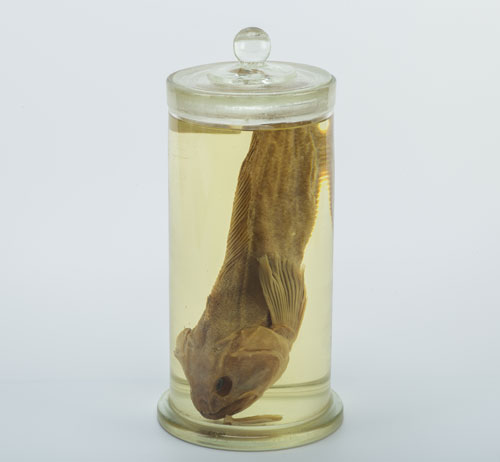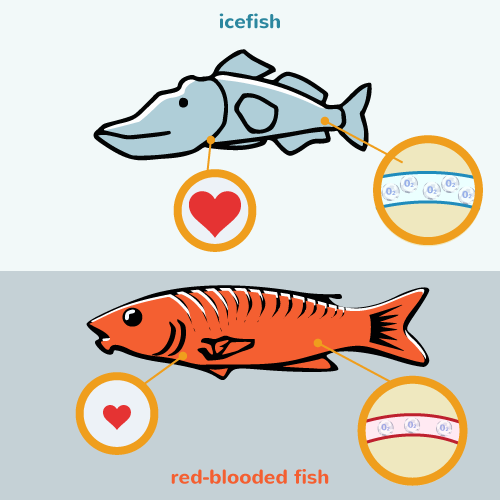The Amazing Antarctic Icefish Is at
Risk from Man-made Climate Change

In 1927, Norwegian zoologist Ditlef Rustad pulled a strange-looking fish out of his net while fishing in the frigid waters off the coast of Bouvet Island, the world’s most remote island, in the subantarctic. He named it the “white-blooded crocodile fish”, because of its transparent blood and protruding, crocodile-like jaw. Today the crocodile fish, along with some 20 members of the same family, are commonly known as icefish.
Even stranger features of the fish were discovered decades later. In a paper published in Nature in 1954, biochemist Johan Ruud reported the discovery that the fish had no red blood cells or hemoglobin, making it the only family of fish, among the roughly 30,000 to 40,000 species on earth, known to lack both. Hemoglobin is the principal component of red blood cells; its function in other fish is to carry oxygen around the body. It also gives blood its red colour, so its absence in the icefish is the reason for its colourless blood and pale body.

So how has the icefish adapted to the loss of hemoglobin over time? Some of the factors are internal. The icefish dissolves oxygen in its blood, but this moves oxygen around the body at about a tenth the rate of red-blooded fishes. To compensate, the icefish developed a much larger heart and blood vessels, as well as much higher volume of blood and dense nets of blood vessels.
But these evolutionary features alone were not enough to ensure the icefish’s survival. There are also external factors. For one, the Southern Ocean has extremely high oxygen levels compared to the other oceans. The icefish could not have survived the initial loss of hemoglobin without this. For another, because of the frigid water, it has very few predators or competitors for food.
In the 1960s, scientists found another reason the icefish is able to survive in the icy waters of the Southern Ocean. It produces antifreeze proteins, which prevent ice crystals from forming in its blood and cells when the water temperature falls below the freezing point of fresh water. Researchers have found that these glycoproteins are 200–500 times more effective than salt in preventing the formation of ice crystals.
In 2014, researchers discovered an undesirable side effect of the evolution of antifreeze proteins – they also prevent internal ice crystals from melting. So they are at the same time antifreeze and anti-melt proteins. Since the research was conducted on a family of fish close to the icefish family, we can assume that the antifreeze proteins in icefish behave in the same way. For 11 years, researchers recorded underwater temperatures in Antarctica’s McMurdo Sound, one of the world’s coldest marine environments, and found that the temperature was never high enough to counteract the effect of the antifreeze proteins. This can have negative consequences, as the internal ice could block the blood capillaries in the same way a blood clot can stop blood flow in humans.
The features that allow the icefish to survive in its frigid environment also make it particularly susceptible to the effects of man-made climate change. The Southern Ocean is warming up, and researchers have found that the icefish is more sensitive to temperature changes than its red-blooded counterparts. The icefish evolved to survive in the coldest marine environment on earth. But this has made it unable to adapt to the warming Southern Ocean.
by Paul Paskewitz






